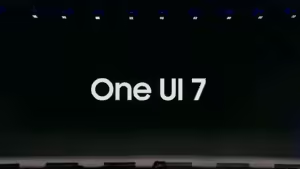
How to Index Your Website Pages on Google Fast?
How to Index Your Website Pages on Google Fast: Step-by-Step Tips & Tricks
Are you eager to see your website pages on Google search results as soon as possible? Indexing is the key to making your content visible on the web. This article will show you how to index your website pages on Google fast, with easy-to-follow, step-by-step instructions.
Let’s dive into everything you need to know about speeding up the indexing process, ensuring your content is discoverable by Google.

🚀 What is Indexing?
Indexing refers to Google scanning your website’s content and storing it in its database (the index). Once your content is indexed, it can appear in search results when users type in relevant queries.
If your pages aren’t indexed, they won’t show up on Google—making your site invisible in search results.
📋 Table of Contents
- Submit URL in Google Search Console
- Create and Submit a Sitemap
- Use Internal Linking
- Share Your URL on Social Media
- Fetch as Google
- Build Backlinks
- Speed Up Website Load Time
- Check for Noindex Tags
- Other Methods for Fast Indexing
- How Long Does Indexing Take?
1. 📢 Submit URL in Google Search Console
The fastest way to get your website indexed is by submitting your URL to Google Search Console directly. Follow these steps:
- Go to Google Search Console.
- Select your website from the properties.
- Paste the URL you want to index into the search bar.
- Press Enter to check if the URL is already indexed.
- If not indexed, click on Request Indexing.
Pro Tip: Requesting indexing doesn’t guarantee immediate results, but this is the best place to start!
2. 🗺️ Create and Submit a Sitemap
A sitemap is a blueprint that helps Google navigate your site. It lists all the important pages and helps search engines index them more efficiently.
Steps to Submit a Sitemap:
- Use plugins like Yoast SEO or Rank Math to generate your sitemap.
- In Google Search Console, go to Sitemaps.
- Enter your sitemap URL (e.g.,
https://yourwebsite.com/sitemap.xml). - Click Submit.
| Sitemap Action | What to Do |
|---|---|
| Generate sitemap using plugins | Use Yoast SEO, Rank Math |
| Submit sitemap in Search Console | Navigate to Sitemaps > Submit |
Pro Tip: Keep your sitemap up-to-date to ensure all newly published or updated pages are included.
3. 🔗 Use Internal Linking
Internal links help Google discover new pages by navigating your website. Make sure to link new content from already indexed, high-traffic pages.
Steps for Internal Linking:
- Identify relevant older pages.
- Add internal links to your new content.
- Use clear, keyword-rich anchor text.
Internal links create pathways for Google’s crawlers, speeding up the indexing process.
Pro Tip: Ensure your homepage or other frequently crawled pages link to your new content for quicker indexing.
4. 📲 Share Your URL on Social Media
Although social media links may not pass SEO value, they can still attract Google’s attention by generating traffic and external engagement.
Ways to Share Your URL:
- Share your new page on platforms like Facebook, Twitter, LinkedIn, etc.
- Post in relevant groups or forums.
- Add the URL to your social media profiles or content.
Increased traffic from diverse platforms can help Google prioritize your page for indexing.
5. 🔍 Fetch as Google
Another tool in Google Search Console is the URL Inspection feature, which allows you to request a quick crawl of your pages.
Steps to Fetch as Google:
- Go to Google Search Console > URL Inspection.
- Enter the URL of your new page.
- Click on Fetch and Render, then click Request Indexing.
6. 🔗 Build Backlinks to Your Page
Backlinks from reputable websites are a major factor in helping Google discover and prioritize your pages.
Effective Ways to Build Backlinks:
- Guest Blogging: Write content for other blogs with links to your site.
- Content Sharing: Share your content on Quora, Reddit, or other platforms.
- Outreach: Contact webmasters or influencers in your niche to link to your new page.
Pro Tip: The higher the authority of the site linking back to you, the faster Google may crawl and index your page.
7. 🚀 Speed Up Your Website Load Time
Google prioritizes fast websites, so improving load speed can increase the chance of faster indexing.
Speed Optimization Tips:
- Compress images using tools like TinyPNG.
- Minify your CSS and JavaScript.
- Use a Content Delivery Network (CDN).
- Leverage browser caching to reduce load times.
Run a test with Google PageSpeed Insights to ensure your site’s speed is optimal.
8. 🔒 Check for Noindex Tags
Sometimes, websites unintentionally block pages from being indexed by adding a noindex tag in the HTML.
How to Check:
- Inspect your page’s source code.
- Look for the
<meta name="robots" content="noindex">tag. - Remove any accidental
noindexinstructions to allow indexing.
9. ⚙️ Other Methods for Fast Indexing
Here are additional methods that can help accelerate the indexing process:
- Ping Search Engines: Use services like Ping-O-Matic to notify search engines of updates.
- Submit to Other Search Engines: Submit your site to Bing and Yahoo, as their crawlers often interact with Google.
- Monitor Crawl Stats: Keep an eye on crawl errors, issues, and performance in Google Search Console.
How Long Does Indexing Take?
While you can’t control how quickly Google indexes your site, the actions outlined above significantly improve the chances of faster indexing. Typically, indexing can happen within:
- A few hours to days for new pages.
- Up to a few weeks for larger or more complex websites.
Note: Google’s algorithms take into account multiple factors such as site authority, freshness of content, and crawl budget when deciding how fast to index a page.
Conclusion
By using Google Search Console, submitting a sitemap, strategically building backlinks, and optimizing your website’s speed, you can significantly speed up the process of getting your web pages indexed.
To summarize, here’s a quick checklist of what you can do to index your website pages on Google fast:
- Submit URLs in Google Search Console.
- Create and submit a sitemap.
- Use internal linking effectively.
- Share the page on social media.
- Fetch the page using Google Search Console’s Fetch as Google tool.
- Build backlinks to your page.
- Ensure fast website load times.
- Remove any noindex tags.
Following these tips will ensure that your content appears in Google search results as quickly as possible. Start now and get your website seen!
























Post Comment